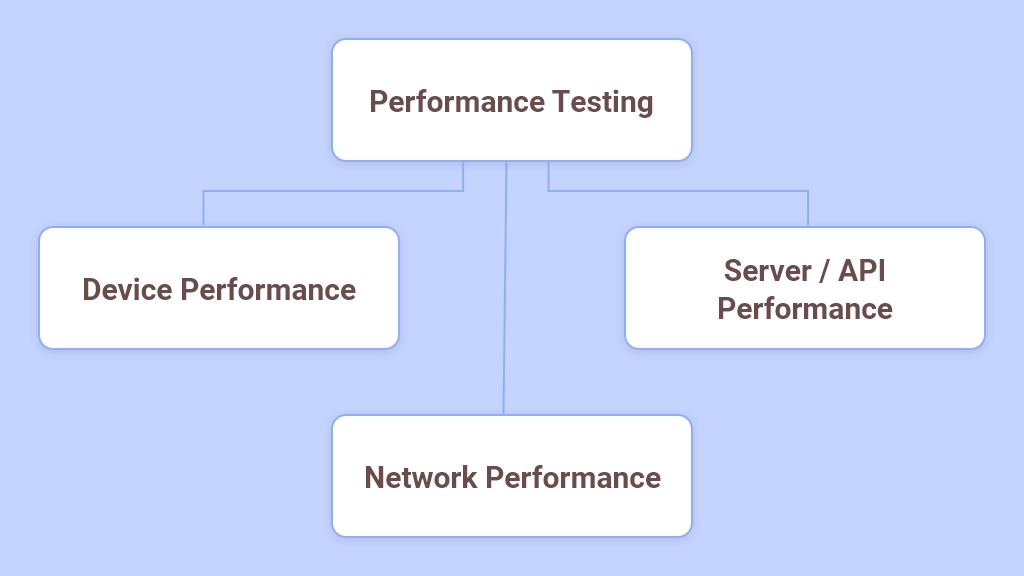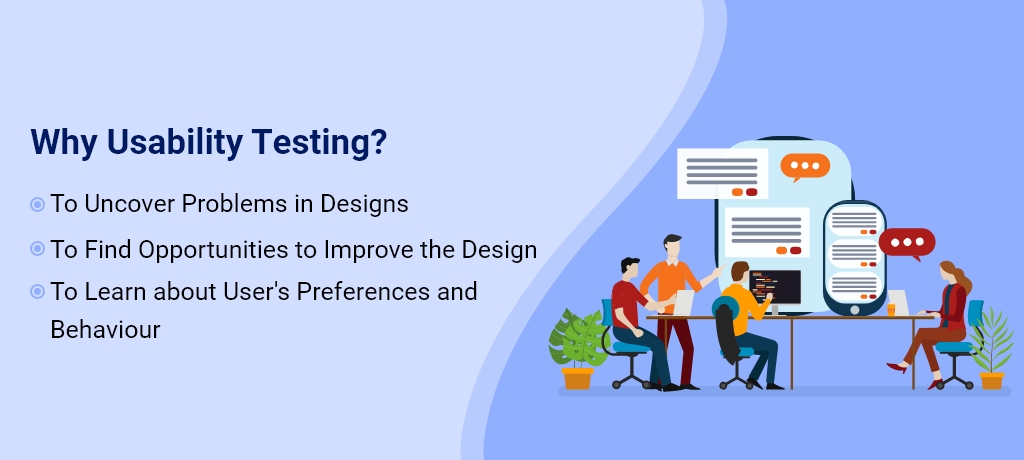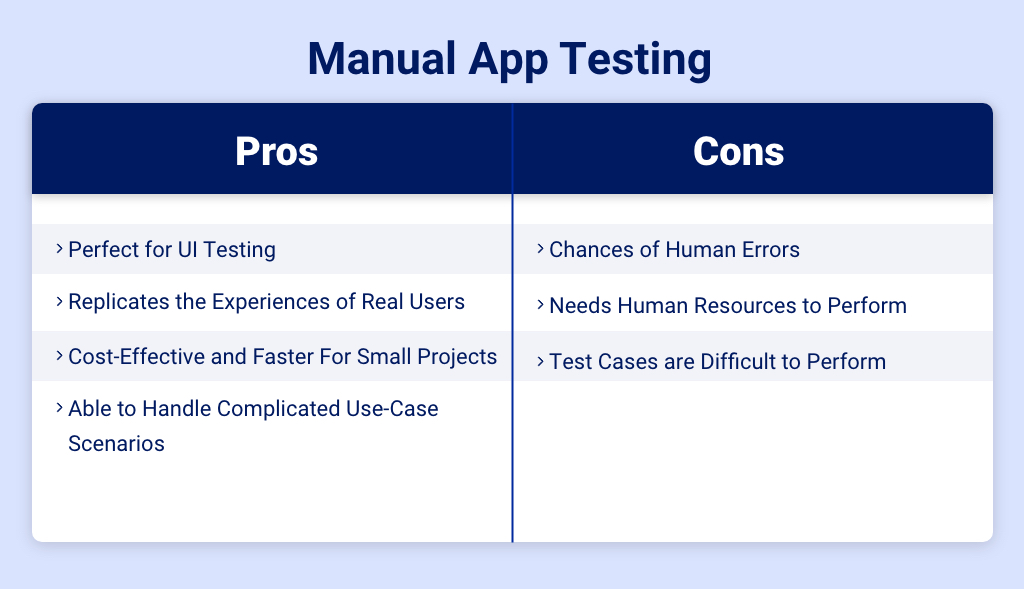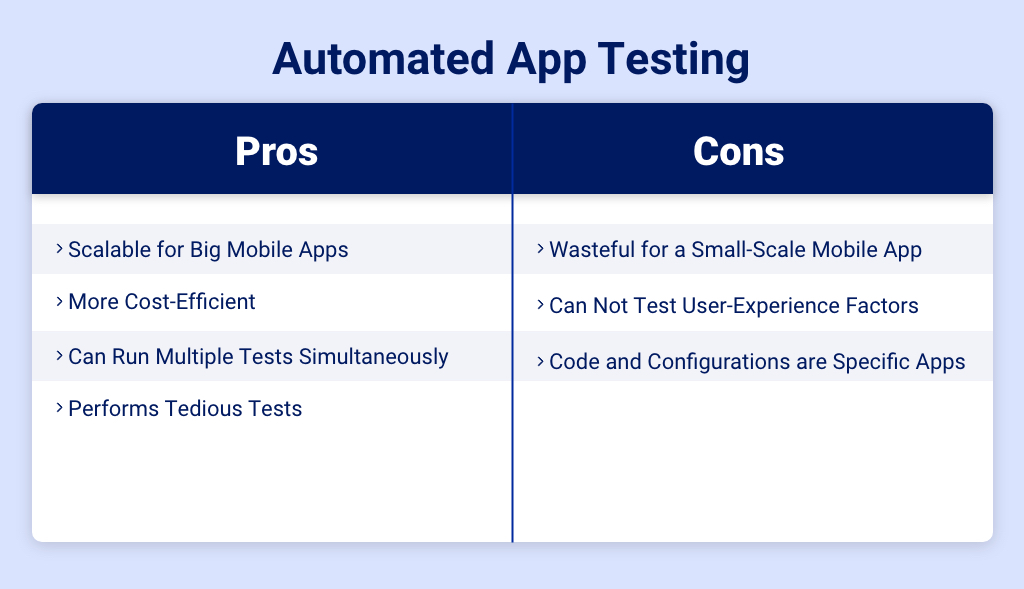Don't miss the chance to work with top 1% of developers.
Sign Up Now and Get FREE CTO-level Consultation.
Confused about your business model?
Request a FREE Business Plan.
5-Step Mobile App Testing Checklist to Ensure Quality
Table of contents

What is the Need of Mobile App Testing? Let’s find out…
As per Statista, there are over 5 Million Mobile Apps available in the app stores. With the number of mobile apps increasing each day – we can say that there is an app for every single need today. And, still, there is room for more ideas and innovations.
With competition in the app market growing at a fast pace – what do you think are the factors behind a mobile app getting viral or successful?
Well, there could be an infinite number of factors like:
- The unique idea behind the app
- The quality of your application
- Its reliability
…and many more.
If you are missing out on either one of them – you are simply throwing your time and money onto the sink.
So, while it is not possible to assure that your app or app idea will be a success – you can surely ensure its performance and usability which in turn will increase the chances of your app getting successful.
But, how? Well, it is quite easy to ensure that the solution you launch is bug-free and high-performing if you employ the right testing methodologies. Here is a Checklist created with the help of our Expert Mobile App Testers that will help you in launching a quality product with amazing user experience.
Let’s check it out:
Mobile App Testing Checklist - What to Check Before Launching an App?
1. App’s Performance
Most of the time application developers consider Mobile App Testing an afterthought. Mobile Development teams need to comply with stringent timelines and for them, testing the performance of an application has the least priority.
To them, just passing the functional tests meet every single basic criterion for launching an application. And believing this statement is the biggest mistake that app owners often commit.
Your app’s performance is the first factor that will impact the user’s decision of keeping your app on their phones or uninstalling it. Also, a Poor App Experience directly leads to lost revenues. This clearly defines the role of an app’s performance testing.
So, when you are done with developing an app make sure to check your app’s performance and measure in terms of Device Performance, Server/API Performance, and Network Performance.

Performance testing puts the spotlight on the functional domain as well as on the back-end of an application. Most imperative KPIs in performance testing includes the use of GPS, energy consumption, and other battery-killing features, memory usage, network bandwidth usage, as well as whether an application works appropriately under excessive loads or not.
Below-mentioned are some of the objectives that are served with performance testing of an app:
- How the App Performs at Heavy Workloads? Performance testing permits product owners to quantify the performance of the framework when the number of users or actions performed by them increases on the mobile app. As end results, the testers will come to know the response time and the amount of resource consumption at the application’s peak points. This is exceptionally useful if your application is likely to experience traffic spikes (where, during a specific season or time frame, the number of visitors floods and then right after some time the number comes to the normal).
- How Hardware Impacts Performance? Through performance testing, the mobile app testers will guarantee that low CPU utilization or little server storage won’t prevent the application from working as per the prerequisites.
- What Is the Capacity of the Application? You’ll have the option to find whether the current setup is equipped for coordinating the set of metrics designed previously (server response time, peak traffic load and so on).
- How the App Performs On the Protocol Level? While conducting performance testing, a mobile app tester will get a realistic simulation of real traffic, make a load profile, and measure the response time.
- How the App Performs Under Critical Conditions? Thanks to performance mobile app testing, an app developer will have the option to build up the limits of the application’s performance. This way, you’ll have the option to prevent and predict system crashes.
The application performance test approach is the same for applications in all businesses and any scale. To effectively execute performance testing, a project manager needs to come up with a strategy that adjusts business prerequisites and test objectives.

2. App’s Functionality
The functionality testing of mobile apps is crucial as it serves a number of purposes – this type of testing guarantees that the mobile app functions as it should. It also ensures that the design and requirement specifications have been met.
All in all, while doing functionality testing, you ensure that your app functions well from the perspective of an end-user. Mobile devices come with explicit hardware features like storage, camera, screen and sensors like accelerometer, geolocation touch sensors or ambient light. Every one of them needs to be tested in various conditions and settings.
For Example:

Also, there is a possibility of a number of interpretation scenarios while an app is functioning like incoming messages, calls or other notifications. The main objective of functionality mobile app testing is to spot potential errors and undesirable issues that may come in case of an interruption.
One should not additionally forget that mobile applications are utilized by people who don’t always do the normal things. For instance, what happens when a user randomly jabs at an application screen or input some illogical information? To test such situations, monkey testing tools are generally utilized which comes under functionality testing.
Also Read: A Definitive Guide to Choosing the Perfect Mobile App Color Themes
3. App’s Usability
In the modern mobile app development world, developers need to provide higher value and quality to users and simply testing applications for performance and functional accuracy isn’t sufficient.
It must be taken ahead to ensure that the mobile application is responsive, intuitive, and engaging enough to engage users and serve their necessities well.

As shown in the image, mobile app usability testing helps developers find and apply changes that can be crucial from the usability perspective.
This incorporates alluding to product users and their needs while fixing and upgrading the quality of the mobile application so as to serve them with a complete solution that serves client prerequisites well, speaks with them in the manner in which they understand, and connects with them to the degree of delight.
Here are some of the crucial traits of Usability Mobile App Testing:
- Incorporates strategies that will be utilized in the testing system.
- Have an assignment list that presents and portrays different exercises and practices to be followed.
- It is all-furnished with the necessary facility, condition, and tools for testing.
- It should have clearness of the area and extent of testing.
- It contains a section on analysis and reporting for delivering test results.
To get full insights on how your users use your application, one can also implement A/B testing. The idea here is to ship two unique variants of an application to the same segment of the end-users for noticing which performs better.
By analyzing the behavior of the user, one can modify the components and features to the manner in which the target audience likes it more. The practice can likewise guide advertisers when making some growth-oriented strategic decisions.
4. App’s Security
The rise of digitalization has made security testing extremely crucial. A completely functional yet insecure application can prompt severe results. Thus, the application should always be tested based on:
- Confidentiality: Are legitimate encryption techniques used to secure private information?
- Authorization: Is the application requesting access to just the necessary services on your device?
- Authentication: Is the application authenticating a user appropriately before giving him the data access?
- Web Services: Is the application interacting with web services utilizing secure protocols?
- Storage: Is the data that is stored locally on the device appropriately encrypted?
While performing security testing, access security must be your first need to guarantee the safety of your business and your clients. It incorporates authorization and authentication. You decide who will get the accessibility and how much access is permitted to an authenticated individual.
This aids in guaranteeing that your data remains safe from external and interior breaches. Hire a tester who is well-versed for the job. The right individual will generate numerous user accounts, including various jobs.
When you are done with accessibility testing, you should also test the protection level of your app’s data. Legitimate security testing measures are needed to guarantee the viability of data storage. But, you need to test first to check the vulnerabilities.
An expert mobile app tester can test the database for a wide range of critical data, for example, user account, billing, passwords, and others. Other functionalities that require testing are the document transfers and payments. These things again require intensive testing.
5. App’s Compatibility
While usability testing pay heeds to the look, feel and convenience, compatibility testing focuses on deciding whether the hardware and software together permit the application to function appropriately.
Mobile Compatibility Testing is performed to validate that your application performs as expected over the combination of browsers and mobile devices that your users will be using to access your app.
As per research, there are numerous sorts of issues related to compatibility that affect user experience, including:
- Content – A full website, as a rule, doesn’t fit on a small device.
- Navigation – Mobile navigation may require diverse navigation strategies than the full-size site.
- Size – Smaller screens require texts and objects to be estimated properly.
- Feature and Functions – Component behavior isn’t always predictable on the various devices and OS.
The native app brings even more issues, like:
- Installation and design upgrade issues
- More reliance on the operating system than with responsive web design applications
- Various versions are required for each working framework.
Your compatibility mobile app testing methodology should be flexible and case-based. The tools/methods you pick should be dependent upon the situation. In the meantime, it is additionally positive to change your procedure according to the functional testing situation
Now that we know the entire checklist that you need to focus on before you launch your app – let’s discuss the most talked-about question in the app testing arena – Manual or Automated?
Here is our take on the same:
Manual or Automated: What Type of Mobile Application Testing Is Best?
In quality assurance (QA), Automation Testing is one of the champions of speed. However, with regards to the first impression and functionality, there is not a viable substitute for manual testing.
The truth of the matter is, even as automated testing software turns out to be progressively refined, manual mobile application testing despite everything plays a gigantic role in delivering quality applications.
So, before you launch your app – you should go for Manual or Automated testing? Before we find an answer to this question – let’s check out the Pros and Cons of both type of mobile app testing:


The above tables clarify that there is no answer to what type of testing is best for mobile apps – it entirely depends on your app’s functionality and what type of testing you are going to perform. So, the best way is to use a hybrid approach.
For instance, assume you are going to launch an application and need to do its usability testing.
In this case, the manual mobile app testers can get a feel for the final user experience. Utilizing the application like it’s intended to be utilized will help decide how user-friendly the application is and human input is key in it.
Then again, if you are conducting performance testing, it is, even more, a numbers game. Testing how quick, responsive, and stable an application is on various devices or under various conditions is something automated tests flourish at executing. The scale and precision of the outcomes make automated tests necessary for execution testing.
Thus, while automation testing is perfect for performing different, tedious tests, manual testing is important for exploring use-cases that aren’t promptly clear.
Wrapping Up
The success of a mobile application relies upon its quality to a great extent. The tolerance of users on mobile is lower than on the desktop. The end-users who use mobile applications have high expectations with respect to ease of use, quality and above all, performance.
At Apptunix, we are committed to providing quality and effective mobile app testing services. We cling to the best testing practices to make the procedure quick and financially savvy. Get in touch with us if you are planning to launch a quality mobile app.
Rate this article!
(12 ratings, average: 3.42 out of 5)
Join 60,000+ Subscribers
Get the weekly updates on the newest brand stories, business models and technology right in your inbox.

Neha Verma is the Marketing Manager of Apptunix – a leading web and mobile app development company offering cutting-edge services in all the emerging technologies. Her write-ups are usually based on technology, mobile apps, marketing, and market research.

Telemedicine 2.0 - A Comprehensive Guide On What Healthcare Providers Need To Know?
Discover how the latest advancements like Artificial Intelligence in telemedicine are reshaping patient care. This comprehensive resource offers insights into the key trends and innovations driving this shift, providing valuable knowledge for healthcare professionals looking to stay ahead.
Download Now!Subscribe to Unlock
Exclusive Business
Insights!
And we will send you a FREE eBook on Mastering Business Intelligence.


















